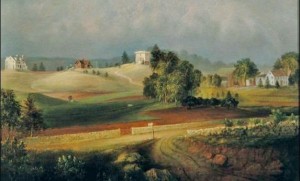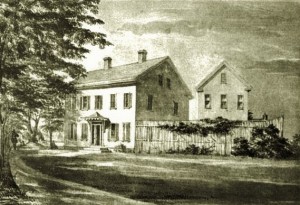
Brook Farm was founded in 1841 in West Roxbury, MA by George Ripley. Soon after establishing the community, a group of writers, ministers, and activists became interested in a movement that was introduced to them by Albert Brisbane, which they called Associationism. Associationism originated from Charles Fourier and his idea of Fourierism. Fourier wanted to create a series of strictly structured communities called phalanxes.
Background of The Harbinger:
Although separated from the general public, the members of Brook Farm wanted to show the outside public that they were invested in helping fight for justice in certain reform movements, such as labor or women’s rights. Therefore, they needed a voice that would express Associationist ideas, and prove they were interested in making change outside of their own community. That voice would become The Harbinger, the newspaper that was created and printed at the community. The first edition was printed in June of 1845, and its editors were George Ripley, John Dwight, and Charles Dana.
What role did The Harbinger play in engaging its readers while spreading the beliefs of the Associationist movement on Brook Farm and outside of the community?
The paper was not a propagandist paper, and was clearly not meant for those on Brook Farm. Ripley and the other editors wanted to spread the word of Association, and make a call to action upon certain reform movements. They wanted to do so in a way that attracted all readers, and was captivating as well as relevant to those on the outside of the community.
- Columns: “Fine Arts,” “Musical Review,” and a literary criticism column that wrote about famous authors. The literary criticism column included works by: George Sand, Edgar Allan Poe, Ralph Waldo Emerson and Nathaniel Hawthorne.
- Only four articles that featured Fourier’s works were ever printed in The Harbinger. Brisbane provided the editors with unpublished works of Fourier, but they chose not to use many of them. Fourier’s first series of writings did not appear until the second issue of the paper.
- The editors only mentioned Brook Farm six times the whole time the paper was in print.
Ripley and the other editors wanted to attract all sorts of readers, and educate them on Association in the process without scaring them away, so they incorporated these columns that related to contemporary news in society. There were still articles that related to Associationist ideas, and specific calls to action on the movements such as labor reform, but it was not the focus of the paper.
Sources used: Articles from The Harbinger, Memoirs from a member of Brook Farm-John Codman, and secondary source that was a biography of George Ripley by Henry Golemba.


